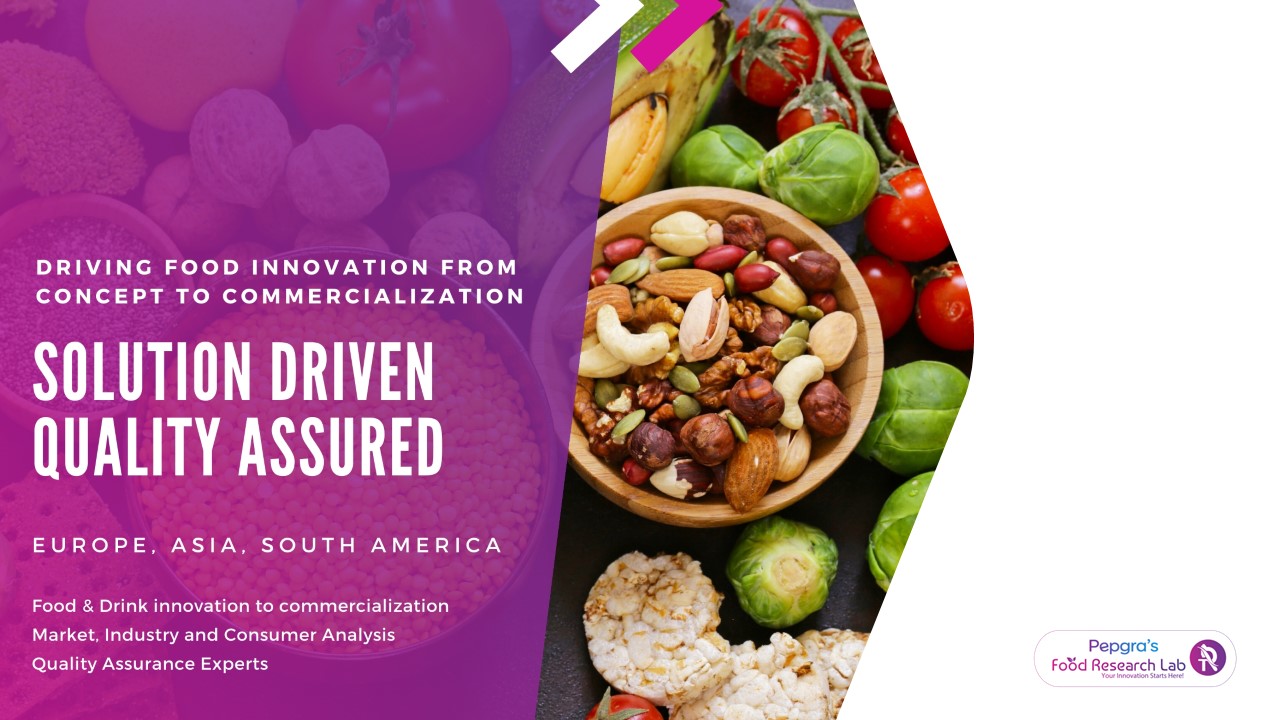functional food ingredients (1) - PowerPoint PPT Presentation
Title:
functional food ingredients (1)
Description:
The food business is always evolving, and to be a part of it as an ingredient provider, you must be as well. However, it is advisable first to comprehend the full potential of your component to uncover new prospects, applications, or markets. – PowerPoint PPT presentation
Number of Views:0
Title: functional food ingredients (1)
1
(No Transcript)
2
FOAM-MAT DRYING
New Technologies Report - 05 Date 4th
November, 2022
3
INTRODUCTION
- Primary objective of food dehydration is to
reduce microbial activity and product
deterioration for extended shelf life. - In addition to preservation, the reduced weight
and bulk of dried products decreases packaging,
handling, and transportation costs - The terms dried and dehydrated are not
synonymous. The US Department of Agriculture
lists dehydrated foods as those with no more than
2.5 water (dry basis) - other forms of food dehydration such freeze
drying, spray drying, microwave drying, vacuum
drying, sun drying, solar drying.
4
FOAM-MAT DRYING PROCESSING TECHNIQUE
- In the process of foam mat drying,
- Liquid foods are whipped into stable foams and
then air dried. Dried. - The foams must maintain their stability and
preserve their characteristic properties during
the warm air drying. - Open construction to make drying and detraying
more quickly.
5
FOAM FORMATION
- A thin liquid film layer called the lamellar
phase separates the two phases of foam (the
scattered and continuous phases) (thin wall of
bubble). According to Eisner et al. (2007), foam
in food and beverages is a complicated system
made up of gas, liquids, solids, and surfactants. - The process of creating foam is important.
Several parameters, such as the quantity, size,
and distribution of bubbles, will affect the
texture of the foam uniformly dispersed little
bubbles further produce softer foams. - Foams' high interfacial energy makes them
thermodynamically unstable. The instability can
be divided into two categories (1) unstable or
transitory foams, which have lifetimes of a few
seconds, and (2) metastable foams, which have
lifetimes of many hours to several days.
6
MOST COMMON ADDITIVES / GUMS / HYDROCOLLOIDS
- Egg albumen foams/gels
- Foam ability and foam stability are one of the
most important functionalities of egg albumen. - However the use of commercially available egg
albumin for foaming poses a few disadvantages
such as limited pH and ionic strength variety for
adequate performance - According to Kampf et al. (2003) continuous
increasing whipping time, increase the number of
small bubbles and decreases the number of larger
bubbles, without much effect on their sizes. The
whipping time has effect on consistency of the
foam or its mechanical strength - Methyl cellulose in foam-mat drying, Methyl
cellulose origin and food uses - Cellulose molecules can combine to form fibrous
crystalline bundles that are highly insoluble and
impermeable to water.
7
MOST COMMON ADDITIVES / GUMS / HYDROCOLLOIDS
- MCs heat gelling ability makes it possible to
eliminate pre-frying from manufactured process of
battered foods. - Temperature and pH do not significantly affect
the water retention of powdered cellulose. - Gum arabic in foam-mat drying
- Gum Arabic is also known as gum acacia
- Gum Arabic also contains small amounts of
protein, which is the important part of the
structure. Combination of gum Arabic and other
gums such as (tragacanth gum) at certain ratio
can produce a thin emulsion, with minimum
viscosity of high quality, shelf and stability.
8
PROCESS FLOW FOR FOAM-MAT DRYING
9
REFERENCES
- https//www.eolss.net/sample-chapters/c10/E5-12-02
-06.pdf - http//labgraos.com.br/manager/uploads/arquivo/cap
--26-handbook-of-food-preservation-pdf-(prof--maur
icio-de-oliveira).pdf - https//www.google.com/url?saiurlhttps3A2F2F
www.sciencedirect.com2Fscience2Farticle2Fpii2F
S0268005X20328666psigAOvVaw3PEVI6hgkdqhzTDWiQIxl
4ust1667630373701000sourceimagescdvfeved0C
AsQjhxqFwoTCJjWibP1k_sCFQAAAAAdAAAAABAe
10
M1. 20































